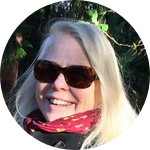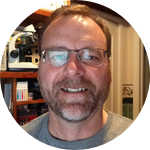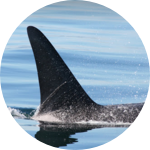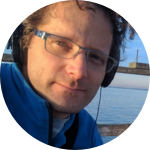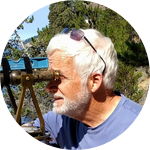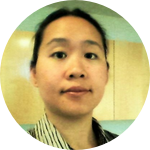About This Project
At Orcasound, we use underwater microphones (hydrophones) to monitor and conserve the endangered orcas that are iconic in Seattle (WA, USA). The expense of the hydrophones impedes our ability to grow our cooperative network. With more hydrophones where sighting networks identify individuals and matrilines visually, our goal is to develop voice ID for orcas.
Can we build cheaper hydrophones and improve our orca call detection AI to infer which matriline is signaling?
Ask the Scientists
Join The DiscussionWhat is the context of this research?
The salmon-seeking orcas -- irreplaceable icons of the Pacific Northwest marine ecosystem -- are endangered and on the brink of extinction. In addition to being magnificent apex predators, they are bioacoustic marvels that use calls and whistles to communicate, and echolocation to navigate and hunt. They signal at frequencies where we hear well, making it easy to listen for them on underwater microphones (hydrophones).
Orcasound has built a cooperative network of hydrophones in Washington State (17 NGOs) within the critical habitat of these Southern Resident Killer Whales. The hydrophones are cabled to shore and use open source software to stream audio data 24/7 to community scientists and AI that detect them and dangerous noises.
What is the significance of this project?
This project will reduce the cost of each hydrophone, allowing us to expand geographically faster. With real-time detection capability across their range, from northern California to northern British Columbia, Orcasound will inform dynamic management and rapid response research to conserve and monitor this endangered population.
The project will also leverage our existing orca call machine learning model and advance marine bioacoustics. Southern Resident Killer Whales make distinct calls which can be used to infer which pod is present (J, K, or L pods, each made up of multiple matrilines). The "excitement call" is common to killer whale ecotypes around the globe. Can the latest machine learning tools infer which matriline emits a common call or sequence of calls?
What are the goals of the project?
Our first aim is to reduce the cost of our hydrophone systems by ~10x. In early 2022, we will experiment to improve our open hard-/soft-ware solution while reducing costs to <$1000/node. We will also build upon the 2019 report on a Prototype Low-Cost Hydrophone for the Ocean of Things Program which aimed to develop a hydrophone for less than $100 USD. In late 2022, we will try to hack a solution for $100-300/node.
In 2022-2023 we will experiment with open source AI tools with the goal of building our sample size for common calls emitted when visually-identified matrilines are present. This exciting new data set will let us test whether common calls (like the excitement call) differ between matrilines.
Budget
Most of the budget items provide computers, hydrophone components, and ADCs with which to experiment as we engineer a less-expensive ($100-300 per node) hardware/software solution for listening live underwater. This is an investment that could return great savings, since each hydrophone node typically costs $3000-10000 to install or replace.
We've also include some support for the hackers, data scientists, DIYers, and other volunteers that have built much of our current hardware/software solution. We have made quantum leaps in software design and development through local hackathons (in-person pre-Covid and virtually since) and think it would be catalytic for Orcasound to run a "hardware hackathon" in which we bench-test a suite of improvements or lower-cost alternatives to our existing deployments. Financial support for such an event could take the form of providing food or mailing components to participants (if the event must be virtual).
Endorsed by
 Project Timeline
Project Timeline
In 2022-23, we will experiment with ways to reduce the cost of each hydrophone system (node) in our network by 10x -- from $1000-3000 per node to $100-300 per node. We'll document our successes for the benefit of other ocean bioacousticians.
We'll also advance our machine and deep learning pipelines -- both in the cloud and on the edge (of the ocean and the internet). This will include experiments with GPU-based edge computers and multi-class inference systems in the cloud.
Feb 25, 2022
Project Launched
Apr 01, 2022
Refine the orcanode code that runs on Raspberry Pi 4
May 01, 2022
Upgrade hardware at each of 3 existing nodes, plus 1-2 new ones
Aug 01, 2022
Mentors/students experiment with novel hardware combinations and compare performance of best cloud-based SRKW call classifiers.
Nov 01, 2022
Hardware hackathon: build low-cost (<100$) hydrophone with existing ADC solution or another solution (at least 1ch/16bit/48kHz; ideally 2ch/24bit/192kHz).
Meet the Team
Affiliates
Orcasound opensource
Since an Orcasound Kickstarter in 2017, we have been building open source software on Github to help save the endangered orcas that seek salmon along the west coast of North America. Experiencing the live sounds of wild killer whales and acting to help conserve them is at the heart of our collective collaboration.
Scott Veirs
I'm an oceanographer and bioacoustician living in Seattle (WA, USA). My research, teaching, and consulting focus on orca and salmon conservation. I help coordinate Orcasound's hydrophone network and open source software/hardware project.
Praful Mathur
Developing AI to accelerate interspecies communication starting with dogs. Additionally, working with Orcasound to develop AI pipelines for orca vocalization decoding.
Founder at 4x companies funded by YCombinator, TechStars, Initialized Capital, Justin Kan, and other notable investors.
val veirs
In 1960, Laura Fermi (Enrico's wife) taught me that I could be an environmentalist. This led me to environmental physics. 20 years ago I put a hydrophone in the Pacific ocean and I've been listening to it ever since.
Joyce Liao
I have volunteered with Orcasound, running the end-to-end test on the OS upgrade of the Raspberry Pi and new package installations. Not only that the project is so inspiring, I have learned a lot from my work with the senior developer about the RPi and the sound packages in general. I am very proud to be part of the project.
Stephen Hicks
Orcasound volunteer working on Orcanode hardware and software
Additional Information
 Current hardware/software solution (black wire is power-over-ethernet cable; blue wire is single hydrophone ($300 LabCore40)
Current hardware/software solution (black wire is power-over-ethernet cable; blue wire is single hydrophone ($300 LabCore40)
We've got the cost down to ~$300/node before adding $600-$3000 worth of hydrophones (2 per node for redundancy and binaural listening or bearing computations). Thus, commercial hydrophones constitute ~60-90% of hardware cost per node!
Live-listening web app (free! tag audio data when you hear something interesting)
Artificial intelligence for orcas projects #ai4orcas (one model is listening with you)
Orcasound's Google Summer of Code student projects (2020-21)
Orcasound's open data wiki (raw and labeled data now part of Amazon's open data registry)
Project Backers
- 19Backers
- 101%Funded
- $5,380Total Donations
- $283.16Average Donation
